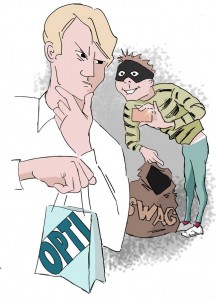 Changing habits and technological innovation are profoundly changing the way we pay, at a speed never seen before, as consumers realise the benefits of alternative payment methods such as contactless and mobile. As a result, optical practices need to consider how to accommodate shifting customer demands as more and more payment options become available.
Changing habits and technological innovation are profoundly changing the way we pay, at a speed never seen before, as consumers realise the benefits of alternative payment methods such as contactless and mobile. As a result, optical practices need to consider how to accommodate shifting customer demands as more and more payment options become available.
According to the Payments Council, 2015 could be the first year that cashless payments overtake cash payments. What’s more, it also predicts that the number of cashless payments is set to increase by 700 million over the next year, while the number of cash payments will drop by 400 million transactions. This is partly due to the increasing popularity of contactless payments, with card issuer Visa attributing the payment method as partly behind an 8.3 per cent boost in spend on Visa cards in 2014.
Register now to continue reading
Thank you for visiting Optician Online. Register now to access up to 10 news and opinion articles a month.
Register
Already have an account? Sign in here
